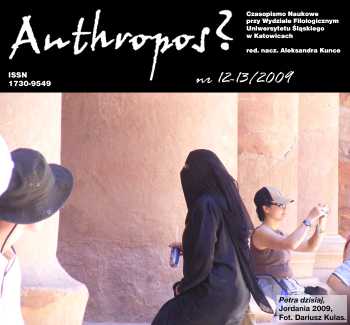O u-śmiechu biologicznie i memetycznie
The Essay Attempt to systematization and distinction between concepts laugh or smile is a work in two sketches. In the first one author opens consider
Author(s): Wojciech Borkowski, Dobrosława Wężowicz-ZiółkowskaSubject(s): Cultural Essay, Political Essay, Societal Essay
Published by: Instytut Nauk o Kulturze i Studiów Interdyscyplinarnych - Wydział Filologiczny - Uniwersytet Śląski
Keywords: memetics; smile; laugh; biology; self/other; communication;
Summary/Abstract: As Irenaus Eibl-Eibesfeldt has noticed, laugh and smile are behaviours, which manifest itself homo sapiens kind through all representatives, from the first week of life and on the elementary level, which means the same for every culture. Authors has trying to prove, that laugh and smile belong to biological sphere of life, not only for animals but also for humans. Authors affirm, just because the laugh and smile are "demonstration" in the biological way of thinking, their mechanism and role has defined as genetic. On the other side, in Van Hoof's opinion expressed sound, called smile and laugh in present day signify - as defense imminent under the influence of fear, or scream with exposed fore-teeth. This figure has informed about extreme fear, submission, and also readiness by desperate attack. These signals are characterized as dominant effect in monkeys culture. Especially moment, which present imminent grimace with rhythmical and synchronized sounds. Mainly it describes collective act of aggression. Van Hoof thinks, that equivalent of this behaviour is exactly human noisy laugh. Without evolutionary reason, laugh is communicable. Moreover, laugh has known as sensible, restorative social bonds, and not rarely aggressive - especially hostile-minded against someone. We often make laugh at someone, and we often forgot, that in this way we delimited - this border line, called self/other. Almost everybody was once a partaker in this kind of social process. In this dispute, authors shows, that smile and laugh are established in arts. The Replic of Mona Lisa's smile is still very popular, especially with appearance networks as for example 'google'. Unquestionable, one reason of popularity Mona Lisa's smile proclaim fact, that it is possible to find three millions answers, when we put catchword 'Mona Lisa' in 'google'. The Authors ask - why this image of mysterious smile didn't disappear though beyond another culture information ? It is one sensible answer for this question - it happened this way, because it owed for Jung's theory, which concern on archetypes and symbols. From here, this what makes sure about constancy the most famous smile is an archetype and the recognizing the own name of the Image begun the independent meme - authors has confirmed. For the question, which ask for reasons as many mimeographs as culture information, strait understanding of memetics give only one answer - it is an effective meme.
Journal: Anthropos?
- Issue Year: 2009
- Issue No: 12-13
- Page Range: 36-45
- Page Count: 10
- Language: Polish

